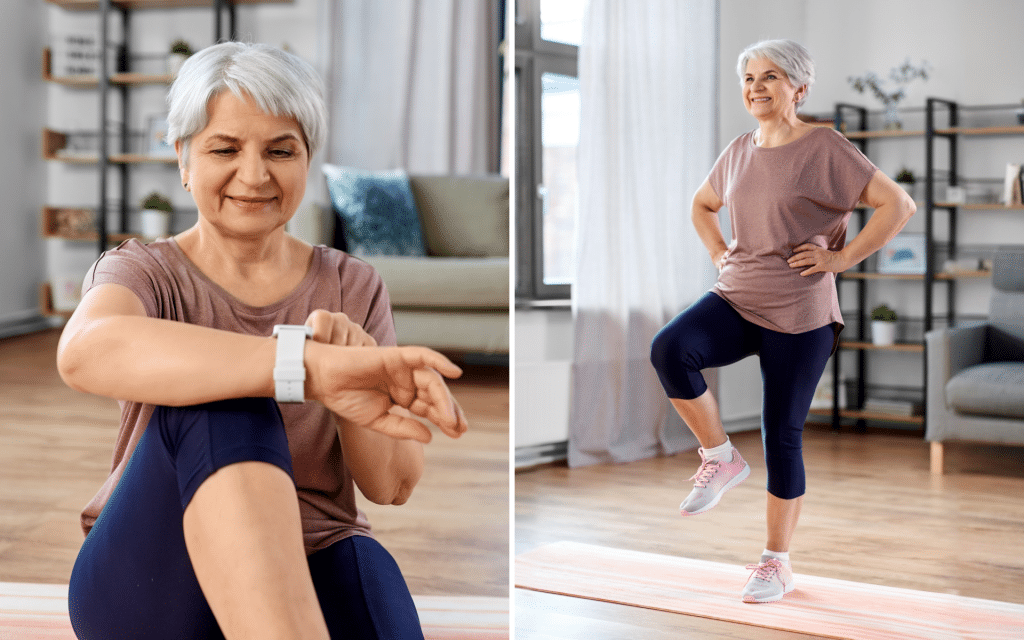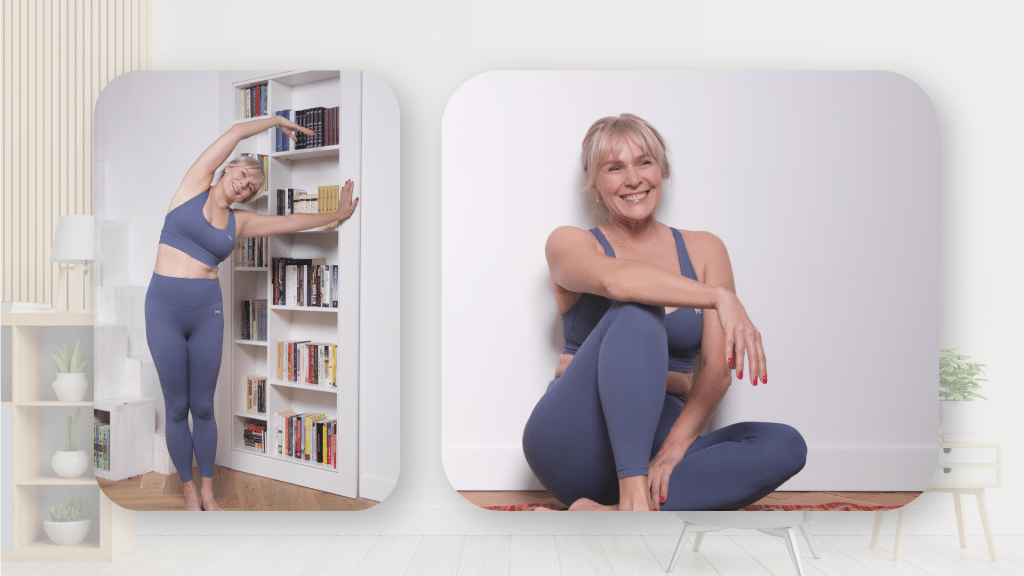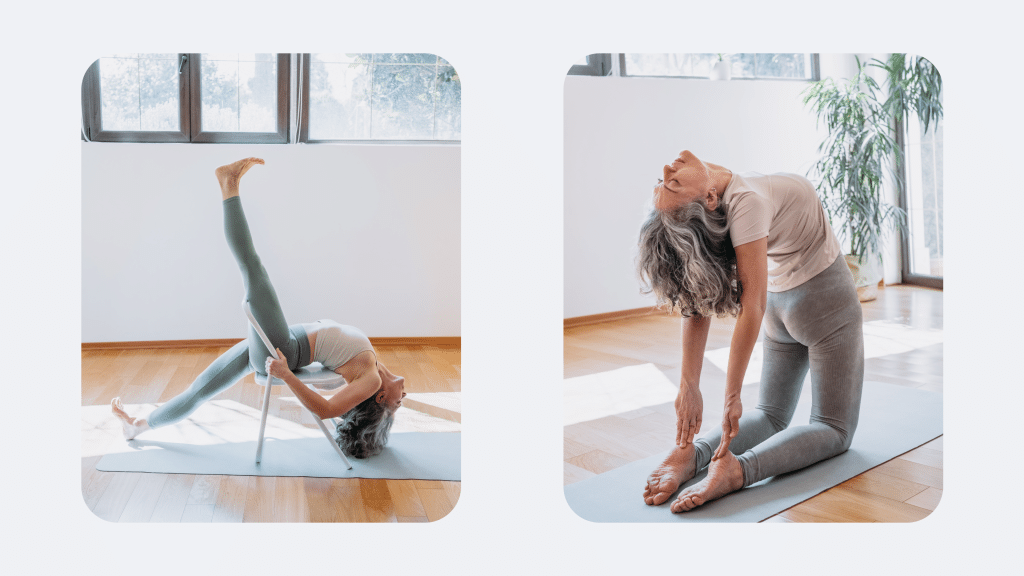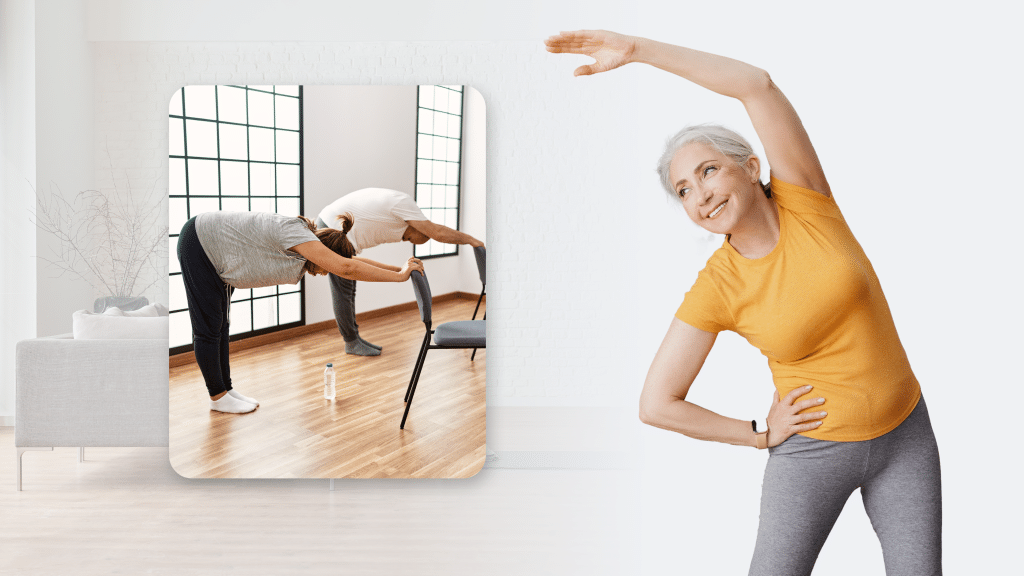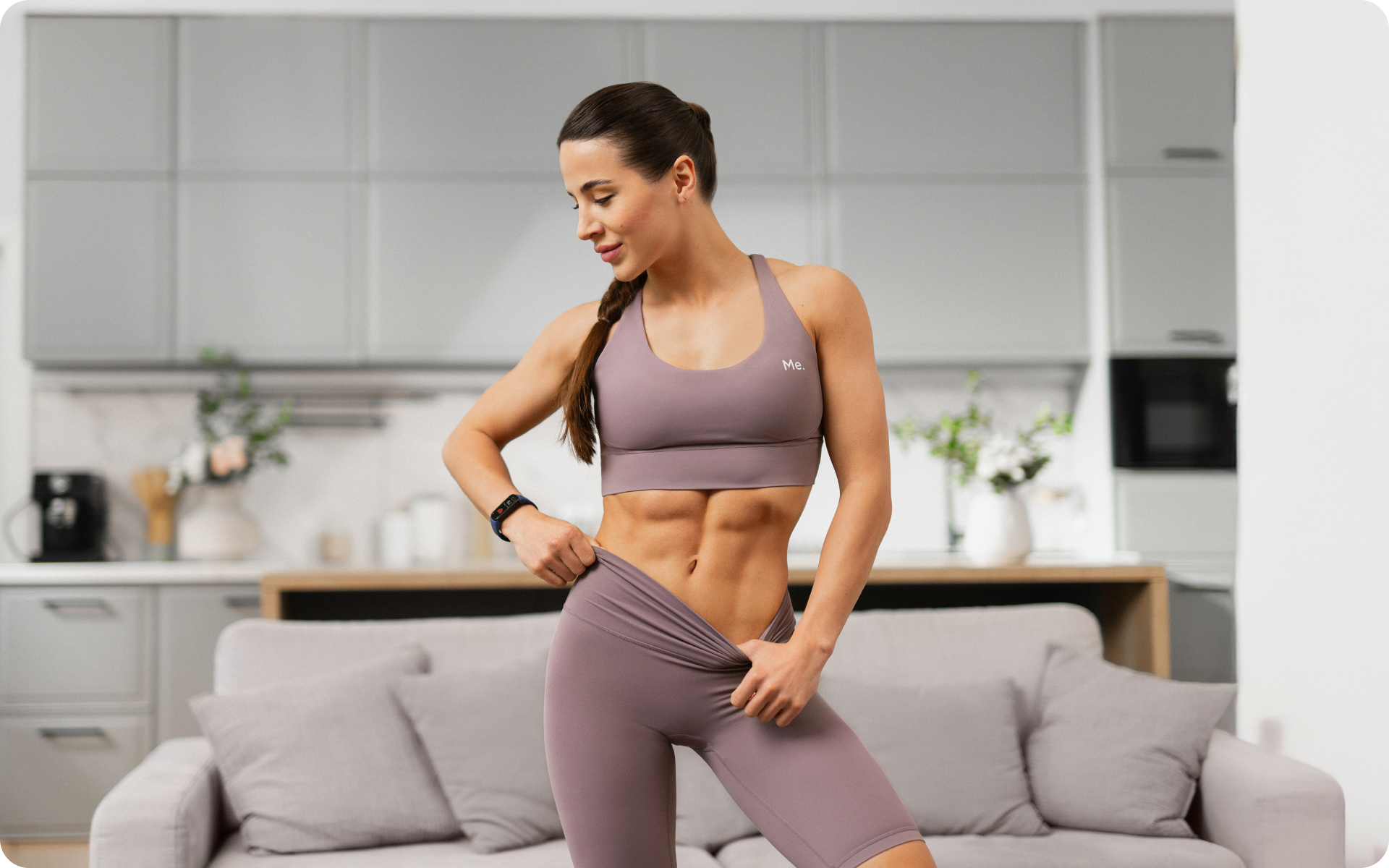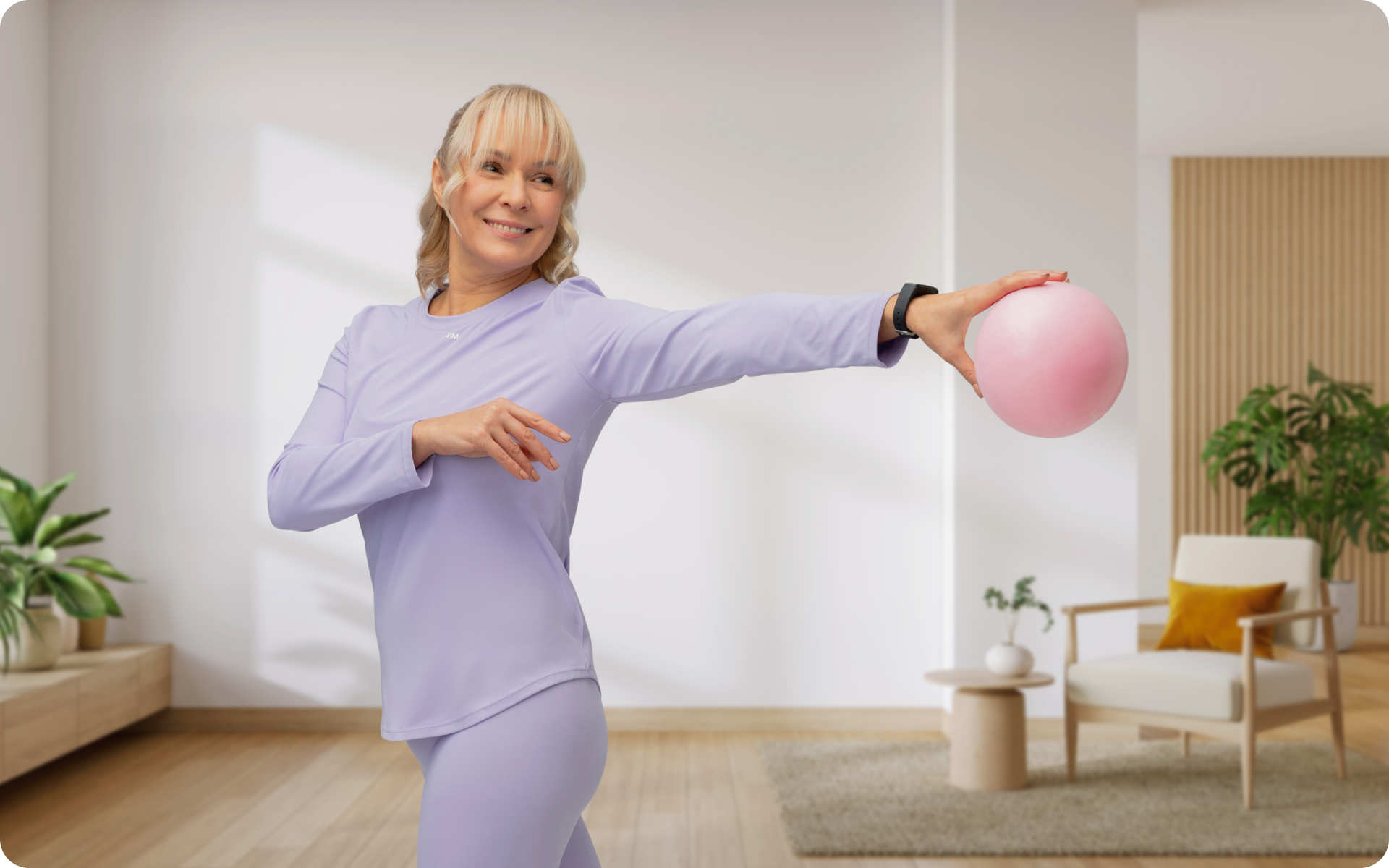Keeping fit can help seniors maintain independence and function well in their daily lives – even if they live in a nursing home or retirement community. And as a plus, scientific studies have shown that regular exercise can slow the aging process in more ways than one (1) (2).
With this in mind, how much exercise does a senior need to stay healthy and remain independent? Also, how can seniors exercise safely, particularly if they have chronic health conditions or are taking medications that cause dizziness or other side effects?
Read on for the answers to these questions and more.
Physiological Changes That Occur in Seniors
As we grow older, our bodies undergo many changes. These physiological changes don’t always hit us all at the same time, but little by little, they make it harder for seniors to exercise and can even make certain types of exercise dangerous.
Here are some changes that affect fitness in older adults.
- Loss of Muscle Mass and Strength
Both men and women start to lose muscle mass during their 30s. From age 45, this loss speeds up, and by age 80, the average person may have lost about one-third of his or her former muscle mass (3).
As a result, seniors tend to be weaker than younger people and the muscles they do have may not work as well. It’s often harder for them to get up from a chair, climb stairs, lift objects, or perform other everyday tasks.
The good news is that even small increases in muscle strength can improve an older person’s ability to function. So it’s important to keep exercising – even if you just do low-impact exercises.
- Reduced Joint Mobility
Joints are the areas where two bones meet. They are held together by ligaments, which are strong bands of tissue that connect bone to bone.
Many seniors develop problems with their joints, particularly in the hips and knees. This can make it more difficult for them to walk or move around without pain and may raise the risk of falls (4).
Also, as you age, the cartilage covering the ends of bones thins and becomes less flexible – a condition called osteoarthritis that can cause your joints to become stiff or swollen (5).
Other forms of arthritis can also develop, including rheumatoid arthritis, which sometimes affects younger people but is more common among seniors (6). If you have osteoarthritis or rheumatoid arthritis, you should talk to your doctor before you start an exercise program as certain types of exercise may be harmful.
Aging also reduces the lubrication in joints and joint cartilages become thinner (7). Even if you’ve had a joint replacement, it can still wear out or loosen up over time.
- Vision Loss
As people age, it becomes more difficult to see things clearly, particularly at night. Seniors often have problems with depth perception, which can make it more likely for them to fall when walking or exercising outside. They are also more likely to have clouded lenses in their eyes and reduced vision (8). To protect your vision, you should always wear sunglasses when exercising outdoors.
- Shortness of Breath
When you’re breathing, oxygen moves from your lungs through your blood vessels and into your cells. When older adults exercise, it’s harder for their bodies to get enough oxygen to the muscles they are using (9). The good news is that this problem can often be treated with medication and regular aerobic exercise can help improve how well your body gets oxygen to your cells.
- Dehydration
Older adults are more likely than younger ones to become dehydrated or under-hydrated, which can lead to health problems that range from mild stomach upset to kidney failure (10).
To reduce the risk of dehydration, you should drink plenty of fluids – especially on hot days when you’re exercising outside. Older adults should also be mindful when drinking caffeine and alcohol.
Reasons why BetterMe is a safe bet: a wide range of calorie-blasting workouts, finger-licking recipes, 24/7 support, challenges that’ll keep you on your best game, and that just scratches the surface! Start using our app and watch the magic happen.
Medications You May Be Taking
If you’re taking any medications, make sure your doctor knows about any exercise program you start so they can consider your medication options and adjust dosages if necessary (11).
Benefits of Exercise for Seniors
Exercise helps seniors stay healthy in many ways. It can (12):
- Strengthen your heart and lungs
- Lower blood pressure, which reduces the risk of issues caused by poor circulation
- Improve your balance and coordination, which can help prevent falls
- Boost levels of high-density lipoprotein (HDL) or “good” cholesterol and reduce triglycerides, another type of blood fat
- Raise energy levels and make you feel less tired
- Help you control weight, which can help improve the condition of your cardiovascular system, bone strength, and immune system.
How Much Should a Senior Exercise?
Experts recommend that older adults engage in moderate exercise and strength training every week.
They recommend (13):
- 150 Minutes of Moderate Aerobic Exercise Such as Walking Each Week
This is about 30 minutes a day, five days a week. If you can’t do this much activity all at once, you can divide the amount into several 10- to 15-minute sessions throughout the day. You can also break up your workouts into shorter periods of vigorous activity.
- Muscle-strengthening Exercises at Least Two Days a Week
These can include lifting weights, using resistance bands or other types of equipment, or doing body weight exercises such as sit-ups and push-ups. For help finding an exercise program that’s right for you, contact your doctor or physical therapist to get medical clearance for exercise. It could also be beneficial to talk with a certified personal trainer who can help you build an exercise program that fits your needs. Uncover the surprising benefits of chair yoga and weightlifting in our past article.
What Exercises Are Good for Seniors?
Due to their unique needs and physical condition, seniors should choose exercises carefully. For example, if you have osteoporosis, your doctor may recommend low-impact activities such as walking and swimming. Low-impact doesn’t necessarily mean easy, but any increase in movement will be good for you.
Here are some of the best senior exercise programs you can take on:
- Aquatic Fitness Programs
If you have arthritis, osteoporosis, or any other health condition that limits your physical activity, a pool is a great place to exercise. It’s low-impact and relaxing (14) (15). Water also helps support your body weight, so it’s easier on your joints (14).
If you have problems using your legs, try pool running instead of walking.
Water exercises also help relax and strengthen your muscles (14). Add flotation belts or other equipment to manipulate the resistance.
You should always follow any safety guidelines your pool offers. If you have health problems, check with your doctor before you start a water fitness routine or ask how often and how long you should do these exercises. Our previous post goes into great detail about the benefits of water aerobics.
- Strength Training
Staying strong helps you perform everyday tasks without extra strain. It also protects your bones and keeps you independent. Strength training is another good way to lower your risk of heart disease, diabetes, and other diseases (16).
Your doctor may recommend working out with weights at least twice a week for 15 to 30 minutes. You may want to work with a certified physical therapist or an experienced certified trainer who can show you the proper exercise technique.
- BetterMe Seniors Plan: Chair Yoga
Chair yoga is one of the most popular senior exercise programs. It combines aerobic activity with gentle stretching and strength-building exercises (17).
Although chair yoga is generally safe, you should talk to your doctor before you start a yoga program. You may need to modify your routine or hold certain poses for only a few seconds if you have heart problems, back issues, or other medical conditions.
However, the benefits of chair yoga extend far beyond physical fitness. Yoga emphasizes breathing, meditation, and relaxation. It can help relieve discomfort, stiffness, and stress (18).
Check out our Full Chair Workout for Seniors guide and learn more about the benefits that chair-based exercises have to offer.
- BetterMe Seniors Plan: Wall Pilates
Wall Pilates for seniors is a form of Pilates exercise that utilizes a wall for support and resistance. This makes it an accessible and beneficial workout option for seniors as it’s gentle on the joints while focusing on improving strength, flexibility, balance, and posture.
Wall Pilates exercises can be adapted to suit different fitness levels. It also includes breathing and meditation techniques that can help improve your flexibility and concentration (19).
If you have difficulty doing more strenuous exercise, you can try this gentler version of Pilates that focuses on toning and stretching.
Explore how Wall Exercises for Seniors can contribute to increased physical function and overall body fitness in our previous blog post.
- Indoor Walking BetterMe Seniors Plan
Simple, affordable, and convenient, indoor walking is an excellent choice for a senior exercise program. It’s also one of the easiest ways to start an exercise routine. If you have balance problems or other limitations that make high-impact activities difficult, you could try walking.
Start out slow and build up your speed and distance over time. If you become winded easily, take breaks every few minutes to give your body a chance to rest.
How to Exercise Safely as You Get Older
Exercise can be safe for seniors at any fitness level, although you may need to increase the intensity, duration, and frequency of your activity gradually over time. Take these steps:
- Check with Your Doctor First
Before you start a new exercise program or increase your activity, you should talk to your doctor. Tell them how often you’d like to exercise and what type of activities you’re planning. Your doctor may suggest a stress test (a test that measures your heart’s ability to handle physical activity) before you start an exercise program.
- Increase the Intensity Gradually
If you haven’t been active for a while, start slowly to avoid getting overtired. Gradually increase the intensity and duration of your workouts over time.
- Do Strength Training Exercises Gradually
Strength-training exercises such as push-ups and lifting weights may cause a problem called shoulder impingement in older adults with osteoporosis (20).
Strength training is important to keep your muscles strong and protect them from injury. If you’re older, talk with your doctor or physical therapist about which strength exercises are best for you.
- Drink Plenty of Water Before, During, and After Exercise
Dehydration can occur in seniors who aren’t active often as they may not sense the need to urinate often. You can avoid dehydration by drinking plenty of water before, during, and after exercise.
- Cool Down and Stretch
Just as you warm up your body before starting to exercise, it’s important to cool down and stretch after a workout. This will help keep your muscles from becoming too stiff or sore (21).
For example, sit on the edge of your chair with one leg extended in front of you. Reach forward to touch your toes, holding for five seconds. Repeat with the other leg.
- Protect Your Skin
Exercise can make older adults sweat more than they’re used to. This can lead to a loss of moisture and cause you to become overheated, increasing the risk of heatstroke (22).
To avoid overheating, stay in a cooler environment during exercise, drink extra fluids before and after your workout, and take frequent breaks if you’re going to be exercising for more than 10 minutes.
Read more: 10 Stretching Exercises for Seniors for Full-Body Flexibility
What Is the Best Time of Day for Seniors to Exercise?
The best time of day for seniors to exercise is that which suits their individual schedules and preferences. However, there are some factors that can help determine the most optimal time for older adults to engage in physical activity.
As we age, our bodies go through a variety of changes that can affect our energy levels, sleep patterns, and overall health. It’s important for seniors to take these into consideration when deciding on the best time of day to exercise.
- Energy Levels: Many seniors may find they have more energy earlier in the day, which makes it a good time to exercise. However, some may have more energy later in the afternoon or evening. It’s important for seniors to listen to their bodies and choose a time when they feel most energized.
- Medication: Some medications can affect our energy levels and may make you feel tired or drowsy at certain times of the day. Seniors should consult their doctors about how their medication may impact their exercise routine and specific times of day to avoid potential conflicts.
- Sleep Patterns: As you age, sleep patterns often change, making it difficult to get a restful night’s sleep. Exercise has been shown to improve sleep quality (23), so seniors may benefit from exercising in the morning or early afternoon to help promote a better night’s sleep.
- Outdoor Temperatures: For seniors who prefer to exercise outdoors, it’s important to avoid extreme temperatures that can be dangerous to their health. This may mean exercising earlier in the day during hot summer months and later in the day during colder winter months.
Morning exercises can be beneficial for establishing a routine and can help boost energy levels throughout the day. Some seniors may also find that exercising in the morning helps them feel more alert and focused.
On the other hand, afternoon or evening exercises can be a great way to unwind after a busy day and can promote relaxation before bedtime. Seniors who have difficulty falling asleep may benefit from exercising later in the day to help tire their bodies out. However, they shouldn’t exercise too late as this may interfere with their ability to fall asleep (24).
Ultimately, the best time of day for seniors to exercise is one that fits into their daily routine and allows them to stay consistent with their physical activity.
If you wish to free yourself from all the extra pounds that have been weighing you down for way too long, start using the BetterMe: Health Coaching app and overhaul your entire life!
What Exercise Burns the Most Belly Fat for Seniors?
No specific exercise targets belly fat alone. However, a combination of aerobic exercises, such as walking or swimming, and strength training can help reduce overall body fat, including belly fat. Consistency in exercise, together with a healthy diet, is the key to achieving and maintaining a healthy weight (25).
The best time of day for seniors to exercise can vary based on individual preferences and health conditions. Generally, morning exercises can be beneficial for establishing a routine and boosting energy levels throughout the day. Afternoon or evening exercises can promote relaxation and help with sleep. Ultimately, the best time for seniors to exercise is one that fits into their daily routine and allows them to stay consistent with physical activity. Walking is an excellent form of exercise for seniors as it helps improve cardiovascular health, enhances mobility, and promotes mental well-being (26). However, to achieve overall fitness, walking should be complemented with strength training and flexibility exercises. Including a variety of activities helps maintain muscle mass, bone density, and balance. Both weights and cardio have significant benefits for seniors, and a balanced approach is ideal. Cardiovascular exercises, such as walking or swimming, improve heart health and endurance, while weight training helps build and maintain muscle mass, strengthens bones, and enhances metabolic health. A combination of both types of exercise can provide comprehensive health benefits (27). Check out our Low-Impact Cardio Workout, which is beginner-friendly to help you get started. Regular exercise is beneficial for seniors, but it’s important to incorporate rest days into your routine to allow for recovery and prevent overuse injuries. Aim for at least 150 minutes of moderate aerobic activity per week, complemented by strength training exercises on two or more days a week, which will allow for adequate rest and recovery (13).Frequently Asked Questions
What is the best time of day for seniors to exercise?
Is walking enough exercise for seniors?
Are weights or cardio better for seniors?
Should seniors exercise every day?
The Bottom Line
As you grow older, exercise can help you maintain your physical abilities and independence for as long as possible. Ask your doctor or pharmacist about the benefits, risks, and side effects of any medications you’re taking before you start an exercise routine. They may be able to suggest lower-impact activities that are safe for your age and health status.
DISCLAIMER:
This article is intended for general informational purposes only and does not serve to address individual circumstances. It is not a substitute for professional advice or help and should not be relied on for making any kind of decision-making. Any action taken as a direct or indirect result of the information in this article is entirely at your own risk and is your sole responsibility.
BetterMe, its content staff, and its medical advisors accept no responsibility for inaccuracies, errors, misstatements, inconsistencies, or omissions and specifically disclaim any liability, loss or risk, personal, professional or otherwise, which may be incurred as a consequence, directly or indirectly, of the use and/or application of any content.
You should always seek the advice of your physician or other qualified health provider with any questions you may have regarding a medical condition or your specific situation. Never disregard professional medical advice or delay seeking it because of BetterMe content. If you suspect or think you may have a medical emergency, call your doctor.
SOURCES:
- Exercise Attenuates the Major Hallmarks of Aging (2015, ncbi.nlm.nih.gov)
- Physical activity and healthy ageing: A systematic review and meta-analysis of longitudinal cohort studies (2017, sciencedirect.com)
- Age-related changes in skeletal muscle: changes to life-style as a therapy (2018, link.springer.com)
- Age-related mobility loss is joint-specific: an analysis from 6,000 Flexitest results (2013, ncbi.nlm.nih.gov)
- What Causes Osteoarthritis, Symptoms & More (2023, niams.nih.gov) 5
- Arthritis (2023, ncbi.nlm.nih.gov)
- Aging and Synovial Joint Function: Changes in Structure and Implications for Mobility (2024, intechopen.com)
- Vision Loss in Older Adults (2016, aafp.org)
- Exercise, ageing and the lung | European Respiratory Society (2018, erj.ersjournals.com)
- Hydration Status in Older Adults: Current Knowledge and Future Challenges (2023, ncbi.nlm.nih.gov)
- Orthostatic Hypertension (2020, ahajournals.org)
- The Importance of Physical Activity Exercise among Older People (2018, ncbi.nlm.nih.gov)
- Older Adult Activity: An Overview | Physical Activity Basics (2023, cdc.gov)
- Effects of Aquatic Exercises for Patients with Osteoarthritis: Systematic Review with Meta-Analysis (2023, ncbi.nlm.nih.gov)
- The effect of aquatic exercise on bone mineral density in older adults. A systematic review and meta-analysis (2023, frontiersin.org)
- Resistance Training is Medicine: Effects of Strength Training on Health (2012, journals.lww.com)
- The Effectiveness of Chair Yoga in Older Adults: A Literature Review (2023, researchgate.net)
- Exploring the therapeutic effects of yoga and its ability to increase quality of life (2011, ncbi.nlm.nih.gov)
- Pilates: how does it work and who needs it? (2011, ncbi.nlm.nih.gov)
- Progressive resistance strength training and the related injuries in older adults: the susceptibility of the shoulder (2024, pubmed.ncbi.nlm.nih.gov)
- Warm Up, Cool Down (2024, heart.org)
- Dehydration and Heat Stroke | Johns Hopkins Medicine (n.d., hopkinsmedicine.org)
- The Effect of Physical Activity on Sleep Quality and Sleep Disorder: A Systematic Review (2023, ncbi.nlm.nih.gov)
- Effect of Nighttime Exercise on Sleep Quality Among the General Population in Riyadh, Saudi Arabia: A Cross-Sectional Study (2023, ncbi.nlm.nih.gov)
- Maintaining a Healthy Weight (2022, nia.nih.gov)
- The multifaceted benefits of walking for healthy aging: from Blue Zones to molecular mechanisms (2023, ncbi.nlm.nih.gov)
- Four Types of Exercise Can Improve Your Health and Physical Ability (2021, nia.nih.gov)

